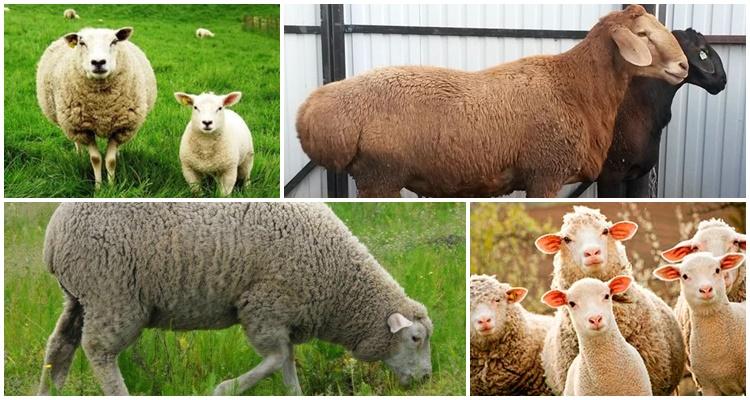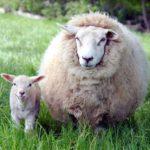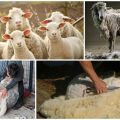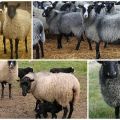What is the difference between a ram and a sheep and how to recognize a female and a male
Many people have a question when raising rams and sheep, what is the difference between these animals. Everyone knows that these are two sexes of the same species of animals. However, the differences in terms do not end there. To understand the essence of the differences, you need to analyze the existing concepts. The appearance of these animals is also important. It is significantly different.
What is the confusion
At first, wild animals were considered rams. Only after the domestication of individuals did the concept of "sheep" appear. Thus, these terms originated at different times. Before that, both the female and the male were called a ram. The sheep is considered a domesticated animal. Moreover, this definition also referred to two sexes.
The confusion is due to the fact that the words "ram" are considered ambiguous. In the first case, this term is understood as the genus of artiodactyl bovids, to which the species of domestic sheep belongs. In the second, this word is used to denote the sex of the animal. It applies within the domestic sheep species. These pets are raised to produce delicious meat - mutton. The concept of "ram" is worth mentioning separately. It is primarily used in astrology.
Differences between a ram and a sheep
When studying the differences between animals, it is worth paying attention to the terminology. In addition, the external features of individuals are considered characteristic features.
Definition
According to the first definition, a ram is a genus of cloven-hoofed individuals, while a sheep is understood as their species. It should be concluded that among the species of animals there is a certain genus, which is called "rams".

It includes the following individuals:
- domestic sheep;
- urial;
- argali;
- mouflons.
This is not a complete list of individuals. Genus and species include many different animals. They belong to the same kingdom, type, class, order, and clan. After which the gradation diverges. In the classification, the species is lower than the genus.
The next definition is that the ram and the sheep belong to the same species. In this case, the first term is used to refer to the male, and the second is called the female. The main differences lie in the appearance.
Appearance
Individuals differ significantly in external data. It should be borne in mind that there are many breeds within this species. It is sometimes worth considering the individual characteristics of each breed. However, most often they do not differ too much, and therefore it is quite possible to outline common features.
The ram is a mammal that belongs to the artiodactyl order. On average, adult males reach 1.5 meters. Representatives of certain breeds can grow up to 1.8 meters. The weight is different - from 25 to 220 kilograms.
The first and main criterion by which it is possible to distinguish a ram from a sheep is the size.
Large horns that form a spiral are considered a characteristic feature of animals. They have small transverse notches. The appearance of the horns is determined by the breed. In some individuals, they grow up to 1.8 meters. However, there are animals with small horns.
Sheep are distinguished by powerful legs, which are adapted to move across fields and mountain slopes. The tail is usually small. Its length is 7-15 centimeters. The eyes are on the sides of the head. Such placement of the organ of vision helps rams to assess the situation without turning their heads.

Raising animals is easy. They only need a place to sleep. In summer, lambs are allowed to be placed under a canopy. A warmer room will be needed in winter. A sheep is essentially a female ram. The main difference in appearance is the size of the body. Females are significantly smaller than males. They also have less developed horns. The body size of the female is often half that of the male.
Differences in coat color are not related to the sex of the animal. They are more typical for different breeds. The most common color options include the following:
- yellow brown;
- gray-red;
- white;
- light gray;
- the black;
- brown.
Sheep and rams live in herds. Animals communicate with the help of characteristic sounds - they snort and bleat. Rams differ in different tonalities of voices. This allows you to recognize your herd. In nature, rams can live for 7-12 years. The lifespan of individual individuals can reach 15 years. With proper care in captivity, this period increases to 20 years.
How to distinguish a female from a male?
So, the following should be attributed to the key criteria:
- Dimensions. As a rule, the male is 2 times the female in size. He also significantly exceeds her in body weight. On average, an adult male weighs 100-120 kilograms, while a female weighs no more than 70-75 kilograms.
- The presence of horns. For many breeds, the presence of horns in the male is characteristic, while the females are hornless. However, there are varieties where both sexes are hornless. The opposite is also possible. Therefore, it is difficult to call this parameter a key one.
- Gender. Long tail or thick hair can make it difficult to see testicles in males and udders in females. However, their presence is easy to check.
- Behavior. When puberty is reached, males begin to fight for the female. During this period, they are characterized by appropriate behavior. Males often show aggression towards other rams. The females are usually calm in nature and obediently follow the other members of the herd.
- Udder presence. It is present exclusively in the female. Sheep do not feed their offspring because they have no mammary glands.
Rams and sheep have a number of differences. In this case, the difference concerns the terminology and appearance of animals.















